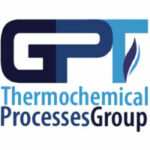SOBRE MÍ
Lorem ipsum dolor sit amet, consectetur adipiscing elit, sed do eiusmod tempor incididunt ut labore et dolore magna aliqua. Ut enim ad minim veniam, quis nostrud exercitation ullamco laboris nisi ut aliquip ex ea commodo consequat. Duis aute irure dolor in reprehenderit in voluptate velit esse cillum dolore eu fugiat nulla pariatur. Excepteur sint occaecat cupidatat non proident, sunt in culpa qui officia deserunt mollit anim id est laborum .Lorem ipsum dolor sit amet, consectetur.
Lorem ipsum dolor sit amet, consectetur adipiscing elit, sed do eiusmod tempor incididunt ut labore et dolore magna aliqua. Ut enim ad minim veniam, quis nostrud exercitation ullamco laboris nisi ut aliquip ex ea commodo consequat. Duis aute irure dolor in reprehenderit in voluptate velit esse cillum dolore eu fugiat nulla pariatur. Excepteur sint occaecat cupidatat non proident, sunt in culpa qui officia deserunt mollit anim id est laborum .Lorem ipsum dolor sit amet, consectetur.
Lorem ipsum dolor sit amet, consectetur adipiscing elit, sed do eiusmod tempor incididunt ut labore et dolore magna aliqua. Ut enim ad minim veniam, quis nostrud exercitation ullamco laboris nisi ut aliquip ex ea commodo consequat. Duis aute irure dolor in reprehenderit in voluptate velit esse cillum dolore eu fugiat nulla pariatur. Excepteur sint occaecat cupidatat non proident, sunt in culpa qui officia deserunt mollit anim id est laborum .Lorem ipsum dolor sit amet, consectetur.
PUBLICATIONS
Lo sentimos, no hay publicaciones que cumplan este criterio.
RESEARCH INTERESTS
- Valorisation of glycerol (sub-product of biodiesel) to obtain value-added products (such as hydrogen, propylene glycol, acetol, ethylene glycol, etc.), improving the economics of biodiesel production.
- Synthesis and characterization of catalysts
- Ethylene production by dehydrogenation of ethane
- Methanol production through the carbon dioxide hydrogenation
PUBLICATIONS
2024
Lete, Alejandro; Raso, Raquel; García, Lucía; Ruiz, Joaquín; Arauzo, Jesús
Synthesis of ketones from glycerol and 1,2-propanediol using copper and nickel catalysts: Unraveling the impact of reaction phase and active metal Artículo de revista
En: Fuel, vol. 371, pp. 132001, 2024, ISSN: 0016-2361.
@article{lete_synthesis_2024,
title = {Synthesis of ketones from glycerol and 1,2-propanediol using copper and nickel catalysts: Unraveling the impact of reaction phase and active metal},
author = {Alejandro Lete and Raquel Raso and Lucía García and Joaquín Ruiz and Jesús Arauzo},
url = {https://www.sciencedirect.com/science/article/pii/S0016236124011499},
doi = {10.1016/j.fuel.2024.132001},
issn = {0016-2361},
year = {2024},
date = {2024-09-01},
urldate = {2024-09-01},
journal = {Fuel},
volume = {371},
pages = {132001},
abstract = {Catalysts based on nickel-aluminum and copper–aluminum were synthesized through the coprecipitation method with a Ni or Cu content of 28 mol%, expressed as Ni/(Ni + Al) or Cu/(Cu + Al). The catalysts were calcined at 675 °C and thoroughly analyzed using various characterization techniques (ICP-OES, N2 adsorption–desorption, NH3-TPD, CO2-TPD, XRD, H2-TPR and elemental analysis). The samples were tested in two different reaction systems, gas phase at atmospheric pressure and liquid phase at 34 absolute bar, to investigate the production of ketones from glycerol and 1,2-propanediol under reaction conditions of 227 °C and a mass of catalyst/reagent mass flow rate ratio (W/m) of 10 gCatalyst·min/gReagent. The characterization results revealed catalysts with high specific surface area and nickel and copper metallic particles, exhibiting good catalytic activity towards liquid products. Gas phase reactions favored the generation of acetol and carbon deposits, which were minimal in liquid phase reactions. The active metal played a crucial role, and it was demonstrated that copper, with a higher number of acidic sites, exhibited greater selectivity towards ketones than the nickel catalyst. The best performance was achieved by the CuAl catalyst in the gas phase reaction of glycerol, with a conversion of 67.0 ± 4.0 %, a carbon selectivity to acetol in the liquid products of 61.4 % and a yield to acetol of 119.8 mgAcetol/gGlycerol.},
keywords = {},
pubstate = {published},
tppubtype = {article}
}
2023
Raso, Raquel; Lete, Alejandro; García, Lucía; Ruiz, Joaquín; Oliva, Miriam; Arauzo, Jesús
Aqueous phase hydrogenolysis of glycerol with in situ generated hydrogen over Ni/Al3Fe1 catalyst: effect of the calcination temperature Artículo de revista
En: RSC Advances, vol. 13, no 8, pp. 5483–5495, 2023, ISSN: 2046-2069, (Publisher: The Royal Society of Chemistry).
@article{raso_aqueous_2023,
title = {Aqueous phase hydrogenolysis of glycerol with in situ generated hydrogen over Ni/Al3Fe1 catalyst: effect of the calcination temperature},
author = {Raquel Raso and Alejandro Lete and Lucía García and Joaquín Ruiz and Miriam Oliva and Jesús Arauzo},
url = {https://pubs.rsc.org/en/content/articlelanding/2023/ra/d2ra07929a},
doi = {10.1039/D2RA07929A},
issn = {2046-2069},
year = {2023},
date = {2023-02-01},
urldate = {2023-02-01},
journal = {RSC Advances},
volume = {13},
number = {8},
pages = {5483–5495},
abstract = {The present work studied the influence of the calcination temperature on the aqueous phase hydrogenolysis of glycerol with in situ generated hydrogen over a Ni/Al3Fe1 catalyst. The Ni/Al3Fe1 catalyst was synthesized by the co-precipitation method at 28 mol% of Ni (Ni/(Ni + Al + Fe)) and a molar ratio of Al/Fe of 3/1. The prepared catalyst was calcined at different temperatures (500–750 °C). The obtained samples were tested for the aqueous phase hydrogenolysis (APH) of glycerol and characterized by several analytical techniques (ICP-OES, H2-TPR, XRD, N2-physisorption, NH3-TPD, STEM, FESEM, and TGA). The catalyst calcined at 625 °C was selected as the best sample due to its high acidity, metal dispersion, and catalytic activity; 1,2-propanediol was the highest carbon selectivity product. In addition, it experienced lower metal leaching than the catalyst calcined at 500 °C.},
note = {Publisher: The Royal Society of Chemistry},
keywords = {},
pubstate = {published},
tppubtype = {article}
}
2021
Raso, Raquel; García, Lucía; Ruiz, Joaquín; Oliva, Miriam; Arauzo, Jesús
Aqueous phase hydrogenolysis of glycerol over Ni/Al-Fe catalysts without external hydrogen addition Artículo de revista
En: Applied Catalysis B: Environmental, vol. 283, pp. 119598, 2021, ISSN: 09263373.
@article{Raso2021,
title = {Aqueous phase hydrogenolysis of glycerol over Ni/Al-Fe catalysts without external hydrogen addition},
author = {Raquel Raso and Lucía García and Joaquín Ruiz and Miriam Oliva and Jesús Arauzo},
doi = {10.1016/j.apcatb.2020.119598},
issn = {09263373},
year = {2021},
date = {2021-04-01},
journal = {Applied Catalysis B: Environmental},
volume = {283},
pages = {119598},
publisher = {Elsevier B.V.},
abstract = {The present work studied the aqueous phase hydrogenolysis (APH) of glycerol (a by-product of biodiesel manufacturing) without external hydrogen addition to produce value-added products. A series of catalysts based on 28 molar % of Ni were prepared through co-precipitation by changing the Al/Fe molar ratio. The calcined and used catalysts were characterized by several techniques (ICP-OES, N2-physisorption, XRD, H2-TPR, NH3-TPD, FESEM and STEM). This work examines the effects of the molar ratio of Al/Fe on the physicochemical characteristics of Ni/Al-Fe catalysts and during the APH of glycerol. All the catalysts showed low carbon yields to gases and high carbon yields to liquid products, mainly 1,2-propanediol, acetol and ethylene glycol. Ni/Al3Fe1 catalyst gave the best performance in the APH of glycerol: the highest glycerol conversion (42.31 %), carbon yield to gases (6.57 %) and carbon yield to liquids (30.45%). 1,2-propanediol was the liquid product with the highest carbon selectivity (70.89%).},
keywords = {},
pubstate = {published},
tppubtype = {article}
}
Raso, Raquel; Tovar, M.; Lasobras, Javier; Herguido, Javier; Kumakiri, I.; Araki, S.; Menéndez, Miguel
Zeolite membranes: Comparison in the separation of H2O/H2/CO2 mixtures and test of a reactor for CO2 hydrogenation to methanol Artículo de revista
En: Catalysis Today, vol. 364, pp. 270–275, 2021, ISSN: 0920-5861.
@article{raso_zeolite_2021,
title = {Zeolite membranes: Comparison in the separation of H2O/H2/CO2 mixtures and test of a reactor for CO2 hydrogenation to methanol},
author = {Raquel Raso and M. Tovar and Javier Lasobras and Javier Herguido and I. Kumakiri and S. Araki and Miguel Menéndez},
url = {https://www.sciencedirect.com/science/article/pii/S0920586120301310},
doi = {10.1016/j.cattod.2020.03.014},
issn = {0920-5861},
year = {2021},
date = {2021-03-01},
urldate = {2021-03-01},
journal = {Catalysis Today},
volume = {364},
pages = {270–275},
series = {Special Issue on the 14th International Conference on Catalysis in Membrane Reactors},
abstract = {A zeolite membrane reactor can be employed for hydrogenation of CO2 to methanol. The removal of water from the reaction environment would increase the reaction rate and the achievable conversion. The separation of water from mixtures containing CO2, hydrogen and water at suitable temperatures for this reaction was tested with several zeolite membranes (zeolite A, mordenite, zeolite T, chabazite and Ti-Chabazite). Zeolite A provided the best H2O/H2 separation factor. Preliminary experiments comparing a traditional reactor and the combination of a traditional reactor with a membrane reactor show that the yield of methanol was improved, in one case being higher than the limit corresponding to the thermodynamic equilibrium in a conventional reactor.},
keywords = {},
pubstate = {published},
tppubtype = {article}
}
2020
Raso, Raquel; García, Lucia; Ruiz, Joaquín; Oliva, Miriam; Arauzo, Jesús
Study of Ni/Al-Fe Catalyst Stability in the Aqueous Phase Hydrogenolysis of Glycerol Artículo de revista
En: Catalysts 2020, Vol. 10, Page 1482, vol. 10, no 12, pp. 1482, 2020, ISSN: 2073-4344.
@article{Raso2020,
title = {Study of Ni/Al-Fe Catalyst Stability in the Aqueous Phase Hydrogenolysis of Glycerol},
author = {Raquel Raso and Lucia García and Joaquín Ruiz and Miriam Oliva and Jesús Arauzo},
url = {https://www.mdpi.com/2073-4344/10/12/1482/htm https://www.mdpi.com/2073-4344/10/12/1482},
doi = {10.3390/CATAL10121482},
issn = {2073-4344},
year = {2020},
date = {2020-12-01},
journal = {Catalysts 2020, Vol. 10, Page 1482},
volume = {10},
number = {12},
pages = {1482},
publisher = {Multidisciplinary Digital Publishing Institute},
abstract = {The present work studied the stability and reusability of Ni/Al-Fe catalyst in the aqueous phase hydrogenolysis of glycerol without external hydrogen addition. The catalyst based on 28 molar % of Ni with 3/1 molar ratio of Al/Fe was prepared through co-precipitation. This catalyst presented the best performance in our last study which compares several Ni/Al-Fe catalysts with different molar ratios of Al/Fe. To see the influence of the pressurized water on the physicochemical characteristics of Ni/Al-Fe catalyst, a test of up to 9 h has been carried out. Fresh and used catalysts were characterized by various techniques: X-ray Diffraction (XRD), N2-physisorption, field emission scanning electron microscopy (FESEM) and STEM. Glycerol conversion and carbon yield to gases and liquids did not vary significantly when compared at 3 h and 9 h. Furthermore, the morphology of the catalyst remains stable after continuous recycling under severe hydrothermal conditions. The nickel rich phase of the catalyst, which was determined by XRD and scanning transmission electron microscopy (STEM) techniques, showed a stable size after 9 h under reaction.},
keywords = {},
pubstate = {published},
tppubtype = {article}
}


